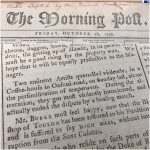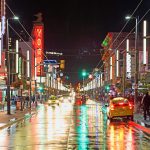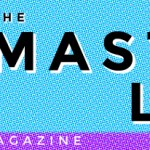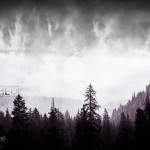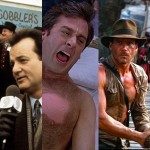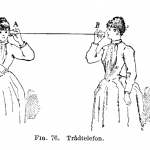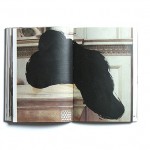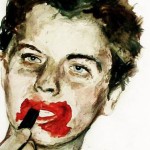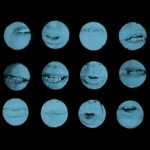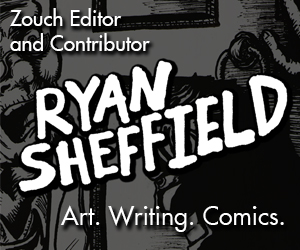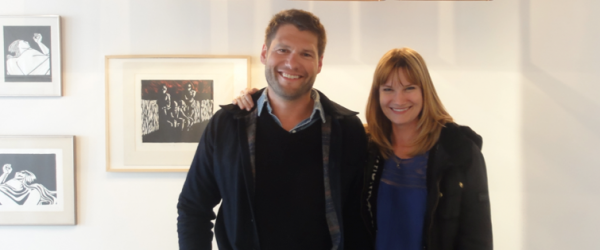
An Interview With May Charters and Mark Hug
Entertainers, InterviewsLovers In A Dangerous Time may already resonate with you thanks to Mr. Cockburn and the Barenaked Ladies, but the story line and unique musical maze from JBM may push the nostalgia further back than anticipated. The film, directed by May Charters and Mark Hug, is cleverly adaptive of tempo context and the music speaks tastefully, yet chills at times.
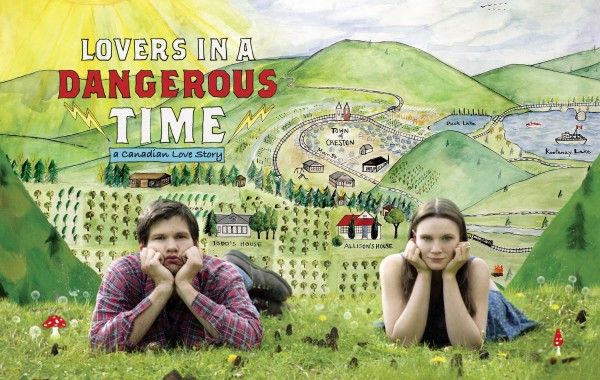
Where did all the hockey links come from?
MARK: I grew up playing hockey. I definitely had friends and knew of that rivalry. In Creston the closest thing to the level of success seen in the film, was in Cranbrook with the Niedermayer brothers, who I played with. I really wanted to have that character [Todd] stuck, to draw people in rather of them saying ’get your shit together.’ I knew I needed to make that realistic.
What was it like writing, producing and starring in the film?
MAY: It’s different when you’re in it, you are living making a film and no one had much time to think about it outside of it really. We all wear these hats and I know people say it’s vanity to say, but we really did have little money and it was based on pure passion.
MARK: We couldn’t afford to have actors. I think art has a vanity for all this so to me I don’t really mind if people think it’s a vanity project. We wrote and knew we could play this, and to try and convince someone to come on the journey and convey realistically…we also had a loose shooting schedule, we didn’t want to set a firm 30-day shoot production. I’ve seen filmmakers make that make mistake, you don’t get enough time to digest and it gets shot too fast.
What are your backgrounds and how did this relationship to create form?
MAY: Well I grew up with a mother and father who were filmmakers (Gillian Charters / Rodney Charters). I was obsessed with films. I always had to tell stories with a camera in my hand. When we both met though, we were at that stage where we knew we both needed to shoot.
MARK: When we both met were really passionate, we just thought okay let’s go for it. Knowing I had someone to go on that journey with me, it’s so daunting and I had written some plays [which is not something to snuff at Mark], but still, it’s not a film. Here’s a girl [May] who had, well, pardon for me to say but ‘she had balls’. May is a painter and I am a photographer so we met working together on another venture. May was taking painting portraits of fourteen people and I was taking photographs of those portraits. So we set up the gallery in LA and made it happen and if we did that and it was successful why not do a feature, right? “ [laughing]
How did you go about making this film?
MAY: I think money is a big deal in filmmaking, but when you grow up here in Canada you are aware of grants because not everyone gets them. I was in dance companies and we were always losing money and it shouldn’t be like that. There can be ways to be a little bit American if you will, and make the opportunities. It’s important to make it happen yourself and do it. Also, we thought ok we have the equipment so what else is stopping us – we can make it.
Do you think living in the U.S helped shape the way you saw filmmaking?
MARK: Well, I don’t really think it was like that, but the choice of a grant for incidence, it’s not even an option. If you want to do something then you figure a way out and do it. I’m that kind of person, you have to find ways to do what you want to do. Also as a first feature it’s unlikely you are going to get the grant. I think it’s part of the process to create though.
MAY: And it shouldn’t define you either, because if you don’t get the grant then there are so many defeated artists as well. I don’t like that.
Some of the real gems were the nuances and actions, Allison has a nervous laugh for example. How did you guys get to the place to present this all?
MAY: We spent a lot of time improvising; that was big for us. Sitting up at Mark’s own orchid seen in the film, I mean that place is beautiful. We had to shoot to find the truth, so there are some scenes that were not used in the film. We were very critical of ourselves and of the film. We thought okay, as an audience member would we buy this, if not we needed to scrap it and reshoot.
So the Greyhound at the end, what’s the story?
MARK: We found a bus, it was all unplanned. He actually stopped when I was waving, pretending I had missed Allison on the bus.
MAY: We had a camera and we just thought okay we are just going to do it, we are just going to shoot the bus, get on the bus etc.
MARK: But yes that last scene, it felt very much real, the saying goodbye to someone, it felt like that real goodbye.
MAY: We wanted to put ourselves in very real situations, the reunion is very real in the film, ha Mark’s sister’s reunion actually, the bus was also very real.
What was the hardest scene to act in?
MARK: Well for me I’d have to say the reunion actually, because it was a bunch of my friends back from Creston. I remember they were freaking out when we got there, May brought up her dad, there were cameras, you know. We only had three takes for that scene too. The entire scene. So yes for me, I was just concentrating on a lot of things in the background and also trying to make sure my friends were good, since they’re my actual hometown friends.
MAY: We had them ad lib a lot, we wanted everything to be very scenario driven. We’d run up and say ‘okay this is what’s happening’ and then fill them with chunks of moments, explaining them in depth to make them come alive.
What do you hope to gain from this release?
MARK: You want it to be successful, see that it created enough of an audience who liked it and spread it. It could be a little cult film – it’s not for everyone, but I think it has that potential.
Information on festivals, upcoming shows and how to snag a copy head here
Both May and Mark also work as Casting Directors for renowned photographer, Bruce Weber. More on M&M Casting here.






